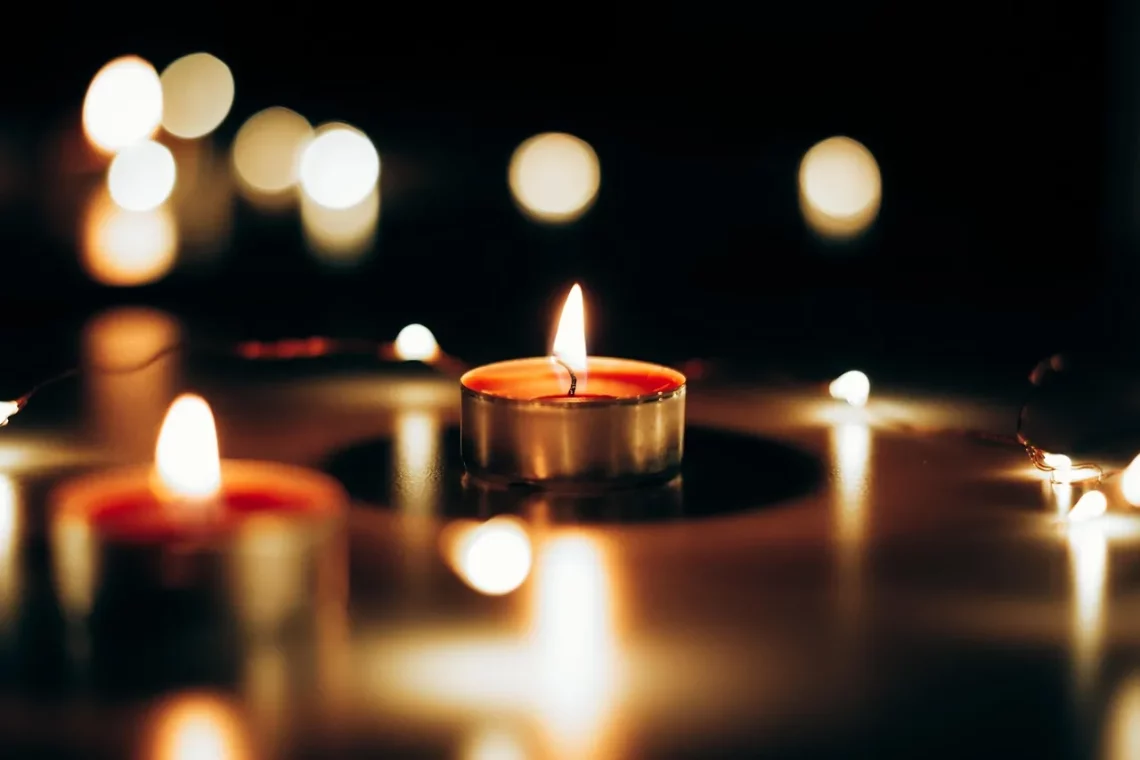
Understanding the Blue Candle Meaning and Its Symbolism
The blue candle holds a unique place in the world of symbolism and spiritual practices. Often associated with calmness, peace, and tranquility, this color has deep-rooted meanings across various cultures and belief systems. Candles, in general, have been used for centuries in rituals, ceremonies, and meditative practices, serving as a powerful tool for setting intentions and manifesting desires. The blue candle, in particular, is believed to facilitate communication, enhance clarity of thought, and promote emotional healing.
The calming hue of blue is reminiscent of the vast sky and deep ocean, invoking feelings of serenity and stability. It is no surprise that many individuals turn to blue candles during times of stress or uncertainty, as the soft glow can provide a sense of comfort. Furthermore, the blue candle is often seen as a bridge between the physical and spiritual realms, making it a popular choice for those seeking to connect with their intuition or higher self.
In various spiritual traditions, the blue candle carries specific meanings and associations, ranging from protection and healing to wisdom and inspiration. Understanding these meanings can empower individuals to use blue candles more effectively in their practices, allowing for a deeper connection to their intentions and desires.
The Symbolism of Blue in Different Cultures
The color blue has been revered across many cultures, each attributing its own symbolism and significance. In ancient Egypt, for instance, blue represented the Nile and was considered a color of resurrection and rebirth. The Egyptians often used blue pigments in their art and tombs, signifying the importance of the color in their spiritual beliefs. Similarly, in many Native American traditions, blue symbolizes healing, wisdom, and protection, often used in ceremonial items and rituals.
In Western cultures, blue is frequently associated with calmness and stability. It is often used in branding and design to evoke trust and reliability. Furthermore, blue is the color of the throat chakra in Eastern philosophies, which governs communication and self-expression. This connection to communication emphasizes the importance of using a blue candle to enhance one’s ability to articulate thoughts and feelings clearly.
Moreover, in the context of spirituality, blue is linked to the divine, often representing a connection to higher realms. Many people light blue candles during meditation or prayer to invite peace and clarity into their lives. The calming effect of this color can create an atmosphere conducive to introspection and deep thought, allowing individuals to connect with their inner selves more profoundly.
The universal appeal of blue can also be seen in its prevalence in nature. The sky and the sea are vast and awe-inspiring, often evoking feelings of tranquility and expansiveness. This natural association reinforces the idea that blue candles can facilitate a sense of peace and calm during moments of chaos or uncertainty.
Using Blue Candles for Healing and Meditation
Blue candles are often utilized for healing purposes in various spiritual practices. The soothing properties of this color make it ideal for promoting emotional balance and alleviating stress. When used in meditation, a blue candle can serve as a focal point, helping to center the mind and reduce distractions.
To incorporate blue candles into a healing practice, one might begin by creating a peaceful space. This can involve dimming the lights, eliminating clutter, and playing soft music to enhance the atmosphere. Once the space is prepared, lighting a blue candle can act as a symbolic gesture, representing the intention for healing and tranquility.
As the candle burns, individuals can focus on their breath, allowing the calming energy of the blue flame to wash over them. Visualizing the blue light enveloping them can enhance the experience, promoting a sense of safety and comfort. This visualization technique can be particularly effective in alleviating anxiety and emotional pain.
In addition to personal meditation, blue candles can also be used in group settings. During collective healing sessions or workshops, lighting a blue candle can unify participants, creating a shared intention for healing and peace. The collective energy generated can amplify the healing effects, making it a powerful experience for all involved.
Furthermore, blue candles can be incorporated into rituals aimed at releasing negative emotions or fostering forgiveness. By setting clear intentions and focusing on the healing properties of the blue candle, individuals can facilitate emotional breakthroughs and deepen their connection to their inner selves.
Manifesting Intentions with Blue Candles
In the realm of manifestation, blue candles play a significant role in clarifying intentions and attracting desired outcomes. The act of lighting a candle while focusing on specific goals can enhance one’s ability to manifest those intentions. The blue candle, with its associations of wisdom and clarity, can serve as a powerful tool in this process.
To begin manifesting intentions with a blue candle, one should first define their goals clearly. Writing down intentions on a piece of paper can help solidify them. Once the intentions are clear, lighting the blue candle while reciting the goals can create a powerful ritual.
As the candle burns, it is essential to maintain focus on the intentions. Visualizing the desired outcomes while observing the flickering flame can help reinforce the connection between the individual and their goals. This practice can instill a sense of confidence and belief in the ability to achieve those intentions.
In addition to individual practices, blue candles can be incorporated into group manifestation rituals. Similar to healing sessions, lighting a blue candle in a group setting can create a shared energy and collective intention. This communal focus can amplify the manifestation process, making it more potent and impactful.
Moreover, after the candle has burned down, individuals can reflect on the experience and the progress made towards their goals. This reflection can enhance self-awareness and motivation, guiding the individual on their journey towards achieving their desires.
Choosing the Right Blue Candle for Your Needs
When selecting a blue candle for specific intentions or rituals, it is essential to consider the type of blue candle that resonates with your needs. Various shades of blue can evoke different feelings and energies, so understanding these nuances can enhance your practice.
Light blue candles, for example, are often associated with calmness and tranquility. They are ideal for meditation or relaxation practices where soothing energy is required. If your goal is to promote peace or reduce stress, a light blue candle would be an excellent choice.
On the other hand, darker blue candles can symbolize wisdom and depth. These candles are well-suited for practices aimed at gaining insight or enhancing intellectual pursuits. If you seek clarity in decision-making or wish to connect with your intuition, a dark blue candle may be more appropriate.
Additionally, consider the size and shape of the candle. Larger candles may burn longer and can be used for extended rituals or continuous focus on intentions, while smaller candles are perfect for quick rituals or when space is limited. The shape of the candle can also influence its energy, with tapered candles often associated with upward movement and growth.
Finally, always source your candles from reputable suppliers to ensure quality and purity. Candles infused with essential oils or natural ingredients can enhance the experience, adding aromatic elements to your rituals.
In conclusion, understanding the significance of blue candles can enrich your spiritual practices and enhance your ability to connect with your intentions. Whether for healing, meditation, or manifestation, the blue candle’s symbolism and energy can serve as a powerful ally on your journey.
**Disclaimer:** This article is for informational purposes only and should not be considered medical advice. For any health-related issues, please consult a qualified healthcare professional.




